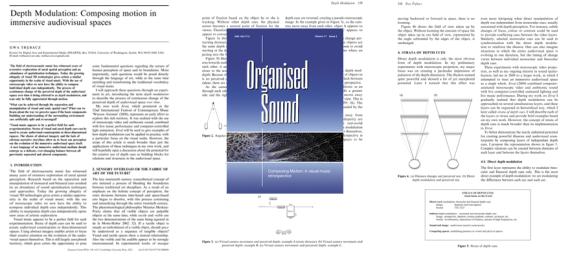ABSTRACT
The field of electroacoustic music has witnessed years of extensive exploration of aural spatial perception and an abundance of spatialisation techniques. Today the growing ubiquity of visual 3D technologies gives artists a similar opportunity in the realm of visual music. With the use of stereoscopic video we now have the ability to compose individual depth cues independently. The process of continuous change of the perceived depth of the audiovisual space over time is being referred to as depth modulation, and can only be fully appreciated through motion.
What can be achieved through the separation and manipulation of visual and sonic spatial cues? What can we learn about the way we perceive space if the basic components building our understanding of the surrounding environment are artificially split and re-arranged?
Visual music appears to be a perfect field for such experimentation. Strata of visual and aural depth cues can be used to create audiovisual counterpoints in three-dimensional spaces. The choice of abstract imagery and the lack of obvious narrative storylines allow us to focus our perception on the evolution of the immersive audiovisual space itself. A new language of an immersive audiovisual medium should emerge as a delicate, ever-changing balance between all previously separated and altered components.
